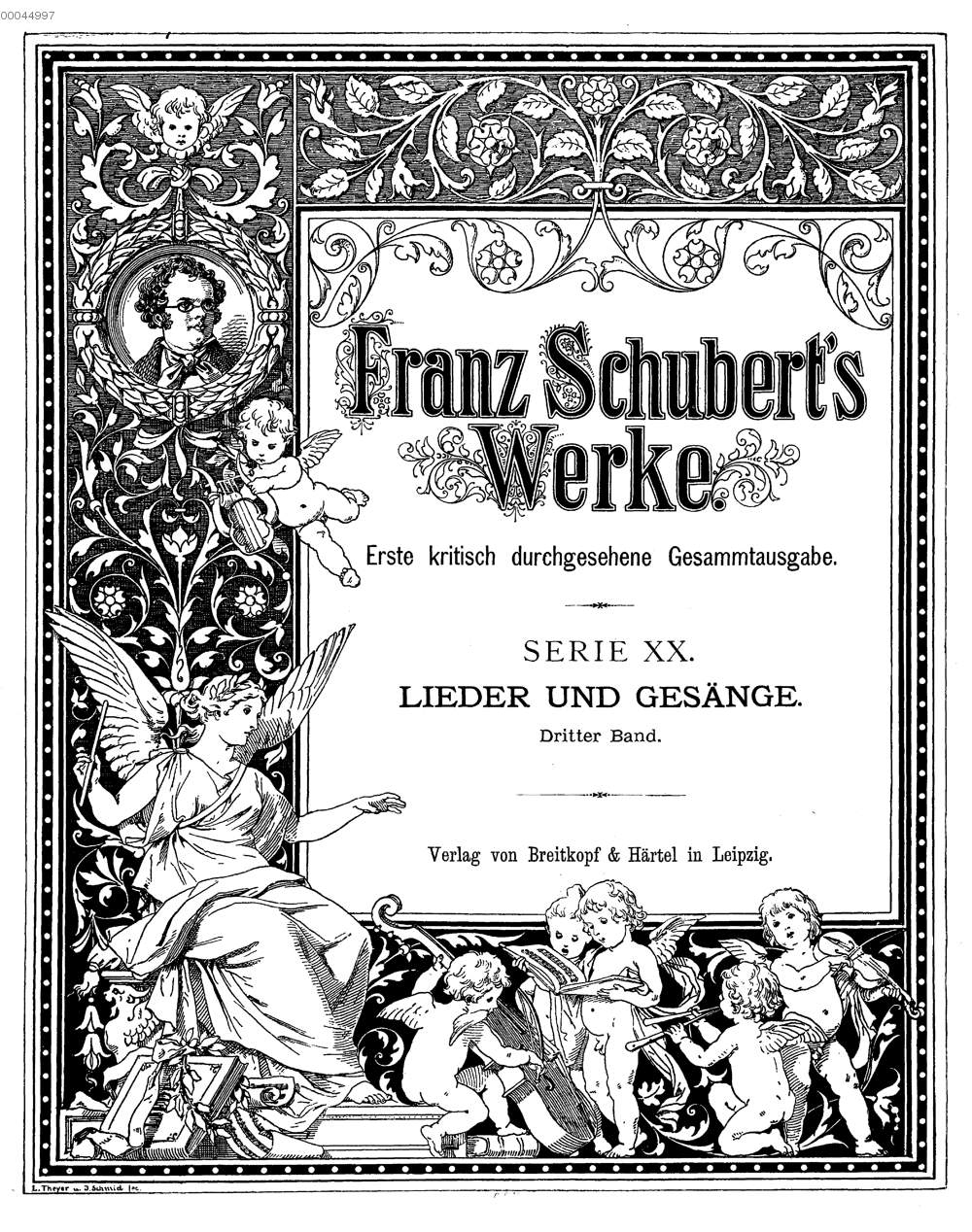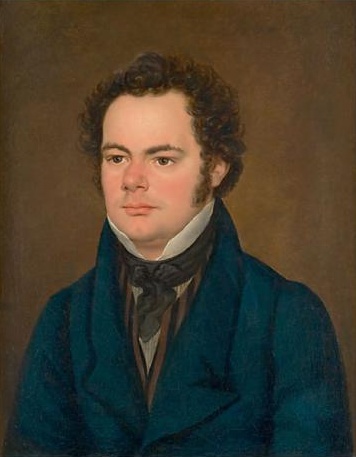|
List Of Compositions By Franz Schubert (1815)
Franz Schubert's compositions of 1815 are mostly in the Deutsch catalogue (D) range D 127–330, and include: * Instrumental works: ** Symphony No. 3, D 200 ** String Quartet No. 9, D 173 ** Piano Sonata in E major, D 157 ** Piano Sonata in C major, D 279 * Vocal music: ** ''Der vierjährige Posten'', D 190 ** ''Die Freunde von Salamanka'', D 326 ** Mass No. 2, D 167 ** Mass No. 3, D 324 ** Stabat Mater in G minor, D 175 ** " Schwertlied", D 170 ** "An die Freude", D 189 ** "Rastlose Liebe", D 138 ** "Der Mondabend", D 141 ** " An Mignon", D 161 ** "Wandrers Nachtlied", D 224 ** "Heidenröslein", D 257 ** " Vaterlandslied", D 287 ** "Sehnsucht", D 310 ** "Mignon", D 321 ** " Hermann und Thusnelda", D 322 ** "Harfenspieler", D 325 ** "Erlkönig", D 328 Table Legend List , - , 128 , 128 , data-sort-value="XXX,1897" , (1 ... [...More Info...] [...Related Items...] OR: [Wikipedia] [Google] [Baidu] |
Franz Schubert
Franz Peter Schubert (; 31 January 179719 November 1828) was an Austrian composer of the late Classical and early Romantic eras. Despite his short lifetime, Schubert left behind a vast ''oeuvre'', including more than 600 secular vocal works (mainly lieder), seven complete symphonies, sacred music, operas, incidental music, and a large body of piano and chamber music. His major works include " Erlkönig" (D. 328), the Piano Quintet in A major, D. 667 (''Trout Quintet''), the Symphony No. 8 in B minor, D. 759 (''Unfinished Symphony''), the "Great" Symphony No. 9 in C major, D. 944, the String Quintet (D. 956), the three last piano sonatas (D. 958–960), the opera '' Fierrabras'' (D. 796), the incidental music to the play '' Rosamunde'' (D. 797), and the song cycles '' Die schöne Müllerin'' (D. 795) and ''Winterreise'' (D. 911). Born in the Himmelpfortgrund suburb of Vienna, Schubert showed uncommon gifts for music from an early age. His father gave him his first v ... [...More Info...] [...Related Items...] OR: [Wikipedia] [Google] [Baidu] |
Heidenröslein
"" or "" ("Rose on the Heath" or "Little Rose of the Field") is a poem by Johann Wolfgang von Goethe, published in 1789. It was written in 1771 during Goethe's stay in Strasbourg when he was in love with Friederike Brion, to whom the poem is addressed. The episode is the inspiration for Franz Lehár's 1928 operetta ', which includes a setting of "" by Lehár. "" tells of a young man who sees a small rose in the meadow and decides to pluck it, despite the rose's warning that she will stick him with her thorn so he will not forget his transgression. Nevertheless, the "wild" boy "breaks" the rose, who must bear the pain with no recourse. The text could be interpreted as the boy overcoming a girl (the rose) by force; she does not consent to this violation but he does not heed her protests. She must suffer the consequences. There is a companion poem by Goethe, " Das Veilchen", in which the man is represented by a violet. Text Sah ein Knab' ein Röslein stehn, Röslein auf d ... [...More Info...] [...Related Items...] OR: [Wikipedia] [Google] [Baidu] |
SATB
SATB is an initialism that describes the scoring of compositions for choirs, and also choirs (or consorts) of instruments. The initials are for the voice types: S for soprano, A for alto, T for tenor and B for bass. Choral music Four-part harmony using soprano, alto, tenor and bass is a common scoring in classical music, including chorales and most Bach cantatas.Shrock, DennisChoral Repertoire''Oxford University Press'', 2009, p. 298, The letters of the abbreviation are also used by publishers to describe different scorings for soloists and choirs other than four-part harmony. For example, the listing "STB solos, SATB choir", of Bach's ''Wachet auf, ruft uns die Stimme'', BWV 140, indicates that a performance needs three soloists: soprano, tenor and bass, and a four-part choir. "SATB/SATB" is used when a double choir is required, as in Penderecki's '' Polish Requiem''. or SSATB, with divided sopranos, which is a typical scoring in English church music. A listing for Ba ... [...More Info...] [...Related Items...] OR: [Wikipedia] [Google] [Baidu] |
Ludwig Heinrich Christoph Hölty
Ludwig may refer to: People and fictional characters * Ludwig (given name), including a list of people and fictional characters * Ludwig (surname), including a list of people * Ludwig Ahgren, or simply Ludwig, American YouTube live streamer and content creator Arts and entertainment * ''Ludwig'' (cartoon), a 1977 animated children's series * ''Ludwig'' (film), a 1973 film by Luchino Visconti about Ludwig II of Bavaria * '' Ludwig: Requiem for a Virgin King'', a 1972 film by Hans-Jürgen Syberberg about Ludwig II of Bavaria * "Ludwig", a 1967 song by Al Hirt Other uses * Ludwig (crater), a small lunar impact crater just beyond the eastern limb of the Moon * Ludwig, Missouri, an unincorporated community in the United States * Ludwig Canal, an abandoned canal in southern Germany * Ludwig Drums, an American manufacturer of musical instruments * ''Ludwig'' (ship), a steamer that sank in 1861 after a collision with the '' Stadt Zürich'' See also * Ludewig * Ludvig * Ludwik * Ludwic ... [...More Info...] [...Related Items...] OR: [Wikipedia] [Google] [Baidu] |
Twelve Viennese German Dances (Schubert)
Franz Schubert (31 January 1797 – 19 November 1828) was an extremely prolific Austrian composer. He composed some 1500 works (or, when collections, cycles and variants are grouped, some thousand compositions). The largest group are the lieder for piano and solo voice (over six hundred), and nearly as many piano pieces. Schubert also composed some 150 part songs, some 40 liturgical compositions (including several masses) and around 20 stage works like operas and incidental music. His orchestral output includes thirteen symphonies (seven completed) and several overtures. Schubert's chamber music includes over 20 string quartets, and several quintets, trios and duos. This article constitutes a complete list of Schubert's known works organized by their genre. The complete output is divided in eight series, and in principle follows the order established by the Neue Schubert-Ausgabe printed edition. The works found in each series are ordered ascendingly according to Deutsch numbers, ... [...More Info...] [...Related Items...] OR: [Wikipedia] [Google] [Baidu] |
12 Viennese German Dances, D
1 (one, unit, unity) is a number representing a single or the only entity. 1 is also a numerical digit and represents a single unit of counting or measurement. For example, a line segment of ''unit length'' is a line segment of length 1. In conventions of sign where zero is considered neither positive nor negative, 1 is the first and smallest positive integer. It is also sometimes considered the first of the infinite sequence of natural numbers, followed by 2, although by other definitions 1 is the second natural number, following 0. The fundamental mathematical property of 1 is to be a multiplicative identity, meaning that any number multiplied by 1 equals the same number. Most if not all properties of 1 can be deduced from this. In advanced mathematics, a multiplicative identity is often denoted 1, even if it is not a number. 1 is by convention not considered a prime number; this was not universally accepted until the mid-20th century. Additionally, 1 is the ... [...More Info...] [...Related Items...] OR: [Wikipedia] [Google] [Baidu] |
Franz Schubert's Werke (Schubert, Franz)
Franz Schubert's Works: Complete and Authoritative Edition (german: Franz Schubert's Werke: Kritisch durchgesehene Gesammtausgabe), also known as the Collected Edition, is a late 19th-century publication of Franz Schubert's compositions.Deutsch 1951, p. xiii The publication is also known as the Alte Gesamt-Ausgabe ("the former complete edition"), abbreviated as AGA, for instance in the 1978 edition of the Deutsch catalogue, in order to distinguish it from the New Schubert Edition. Publication The twenty-two series (some in several volumes) were published from 1884 to 1897 by Breitkopf & Härtel. Eusebius Mandyczewski was one of the main editors. From 1965 Dover Publications started to reprint this edition, and later it was made available at the IMSLP website. Content I. Symphonien (Nos. 1-8) Editor: Johannes Brahms. Issued 1884. Two volumes (Symphonies 1–3; Symphonies 4–6/8–9). Reprinted: Dover Publications, 1978. II. Overtüren und Andere Orchesterwerke Editor: Johann N ... [...More Info...] [...Related Items...] OR: [Wikipedia] [Google] [Baidu] |
Erlkönig (Schubert)
"Erlkönig", Op. 1, 328, is a '' Lied'' composed by Franz Schubert in 1815, which sets Johann Wolfgang von Goethe's poem of the same name. The singer takes the role of four characters — the narrator, a father, his small son, and the titular "Erlking", a supernatural creature who pursues the boy — each of whom exhibit different tessitura, harmonic and rhythmic characteristics. A technically challenging piece for both performers and accompanists, "Erlkönig" has been popular and acclaimed since its premiere in 1821, and has been described as one of the "commanding compositions of the century". Among Schubert's most famous works, the work has been arranged by various composers, such as Franz Liszt (solo piano) and Heinrich Wilhelm Ernst (solo violin); Hector Berlioz, Franz Liszt, and Max Reger have orchestrated the piece. History Goethe's poem was set in music by some hundred composers, including Johann Friedrich Reichardt, Carl Friedrich Zelter and Carl Loewe, ... [...More Info...] [...Related Items...] OR: [Wikipedia] [Google] [Baidu] |
Harfenspieler
Franz Schubert's best known song cycles, like '' Die schöne Müllerin'' and '' Winterreise'' are based on separate poems with a common theme and narrative. Other song cycles are based on consecutive excerpts of the same literary work: Schubert's "Ave Maria" is part of such a song cycle based on excerpts of the same poem, in this case by Walter Scott. When the poems of a group of songs have a common link, and are for this reason grouped under a single Deutsch number, but there is no common narrative, the collection is rather qualified as a song set than a song cycle. Some of Schubert's song cycles contain both Lieder for solo voice as well as part songs. There is, however, always a piano accompaniment. ''Don Gayseros'' D 93, Song cycle ''Don Gayseros'' for voice and piano (1815?): :: 1. "Don Gayseros I" Don Gayseros, wunderlicher, schöner Ritter':: 2. "Don Gayseros II" Nächtens klang die süße Laute'(fragment?) :: 3. "Don Gayseros III" An dem jungen Morgenhimmel'(fragm ... [...More Info...] [...Related Items...] OR: [Wikipedia] [Google] [Baidu] |
Hermann Und Thusnelda
"Hermann und Thusnelda" is a poem written in 1752 by Friedrich Gottlieb Klopstock exalting the Cheruscan chieftain Arminius, whom Johannes Turmair and Martin Luther named ''Hermann'' in the 16th century, and his wife Thusnelda. The poem was set to music by Franz Schubert in 1815 ( 322). History Since the rediscovery of Tacitus's ''Germania'' in the 16th century, Germans have exalted the Germanic tribes as their direct ancestors. They especially praised German liberty defended by Arminius in 9 A.D. when three legions of the Roman Empire were defeated on Germanic soil, thus putting an end to Roman plans to subjugate Germania. In Klopstock's poem, blood-stained Hermann returns from battle and is praised by his wife Thusnelda, who is happy about the death of the Roman soldiers. Her husband's victory heavily delights her making her confess that her love for Hermann has never been as ardent as now after the lurid fight. Arminius himself only regrets that Roman emperor Augustus ... [...More Info...] [...Related Items...] OR: [Wikipedia] [Google] [Baidu] |






.jpg)